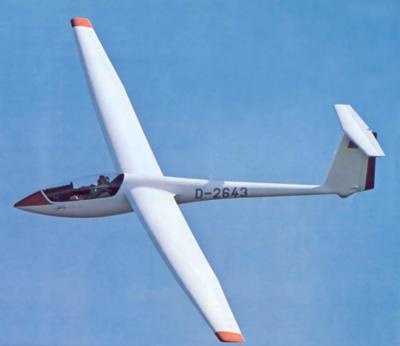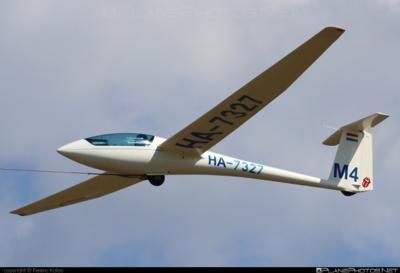Wed, Oct 11, 2023
Devil Complacency
The NTSB has released its final report on a 16 April 2022 accident in which a Schleicher ASW-19B glider was substantially damaged and its Private Pilot rated operator (and sole occupant) was fatally injured shortly after departing Jacksonville, Florida’s Herlong Recreational Airport (HEG).

The accident-aircraft was operated as a personal flight under Part 91 of the Federal Aviation Regulations.
In its report, the NTSB set forth:
“Shortly after the tow airplane and the glider became airborne, the pilot of the glider released from the tow plane about two-hundred-feet above ground level, then entered a left turn back toward the runway, during which the glider impacted terrain. Witnesses to the accident described the glider’s takeoff as “abnormal” and “erratic” and reported that the glider climbed above the tow plane twice before the glider pilot released from tow.
“Post-accident examination of the glider revealed that the elevator control was not connected as required by preflight assembly procedures, which would have resulted in the pilot’s inability to control the glider’s pitch attitude. According to the tow pilot, the glider pilot had assembled the glider by himself—as he had done many times before—on the morning of the accident. It is likely that the pilot, had he completed a positive control check after assembling the aircraft, would have identified the disconnected elevator control.

“Toxicology testing identified two sedating drugs, cetirizine (Zyrtec) and trazodone (an antidepressant), in the pilot’s cavity blood and urine; however, the pilot’s use of these medications most likely did not contribute to the accident.”
The NTSB determined the accident had likely been caused by the pilot’s improper preflight assembly of the glider’s elevator control, which occasioned a loss of pitch control on takeoff. The Board ascribed the accident, also, to the pilot’s failure to complete a preflight positive control check, which would have identified the disconnected elevator control.
More News
Also: Netherlands Donates 18 F16s, 2 737s Collide On Ramp, E-7 Wedgetail Cut, AgEagle's 100th In S Korea The Pilot and Aircraft Privacy Act was introduced in the House by Represent>[...]
Pilot Also Reported That Due To A Fuel Leak, The Auxiliary Fuel Tanks Were Not Used On June 4, 2025, at 13:41 eastern daylight time, a Piper PA-23, N2109P, was substantially damage>[...]
Have A Story That NEEDS To Be Featured On Aero-News? Here’s How To Submit A Story To Our Team Some of the greatest new stories ANN has ever covered have been submitted by our>[...]
From 2023 (YouTube Edition): Reflections on War’s Collective Lessons and Cyclical Nature The exigencies of war ought be colorblind. Inane social-constructs the likes of racis>[...]
What Goes Around, May Yet Come Back Around, Klyde FMI: www.klydemorris.com>[...]
 Airborne 06.30.25: US v ADS-B Misuse, Natl STOL Fire, Volocopter Resumes
Airborne 06.30.25: US v ADS-B Misuse, Natl STOL Fire, Volocopter Resumes NTSB Prelim: Piper PA-23
NTSB Prelim: Piper PA-23 ANN FAQ: Submit a News Story!
ANN FAQ: Submit a News Story! Classic Aero-TV: One Mans Vietnam
Classic Aero-TV: One Mans Vietnam Klyde Morris (06.30.25)
Klyde Morris (06.30.25)




